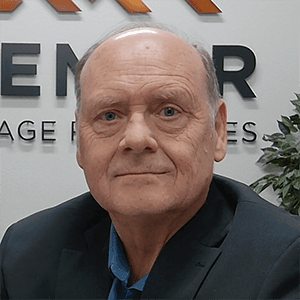
For many older Americans, home equity is the missing link between a successful retirement strategy and financial struggles. That’s because a lot of retirees are living on a fixed income with a good portion of their net worth tied up in their primary residence. There are only two ways for them to access their home equity—sell the property or borrow against it.
Today, a growing number of seniors are taking hold of that missing link, accessing their equity to purchase another home through the FHA’s Home Equity Conversion Mortgage for Purchase, or H4P for short. This little-known purchase product was rolled out in 2008. I’ve taught classes on it for more than a decade. The H4P accounts for only about 6% of all FHA HECM originations, according to a recent HousingWire article, yet that’s the highest share in the past five years, and I believe the program is poised for growth. It’s the best-kept secret in real estate finance and the key to many seniors being able to relocate successfully.
Home equity conversion products are also known as reverse mortgages. I avoid that term because it has an undeservedly negative connotation, stemming from deceptive claims and practices made by some unscrupulous lenders. The truth is, in the proper circumstances, an H4P can be life-changing.
Too often, seniors’ default retirement strategy depends on a poorly paying, poorly funded annuity: Social Security. The average Social Security payment right now is about $1,800 a month—less than $22,000 per year. Meanwhile, these seniors may be sitting on significant equity while still paying off a 30-year mortgage and slowly going broke. (It should come as no surprise that the root words for mortgage are the French mort for death and gage for pledge—a death pledge.)
You can help older clients turn this strategy on its head through use of the H4P.
Let’s take a hypothetical example: Marlene, 80, lives in a home with multiple levels. Ideally, she’d like to move to a new single-story home or condo near her only living relative, a beloved niece. Marlene is living on a fixed income, though, and feels the move to her niece’s higher-priced market will be impossible.
With a conventional 30-year mortgage, she’s probably right. If she nets $300,000 from the sale of her home and puts the entire amount down on a $500,000 ranch home in the new market, she’s starting out with a $200,000 mortgage. At a 7% interest rate, she’ll pay about $1,330 on her mortgage payment, not counting insurance and taxes. With her monthly Social Security payment and small retirement savings, she may not even qualify for a conventional loan. Even if she did, she’d be paying on her mortgage until age 110.
With the FHA H4P product, there’s no mortgage payment. The amortization schedule in the table below demonstrates how it works. Marlene’s age and the interest rate determine the amount she’s required to put down. At age 80 with a 6.98% interest rate, Marlene must put down 60% on a $500,000 property. Her initial loan balance is $223,000, including financed closing costs. Because she makes no payments on the loan, her loan balance increases over time. But her equity remains steady as her home appreciates in value. Using FHA guidelines, H4P lenders figure 4% annual appreciation, the long-term historic average in the U.S.

Marlene still needs enough monthly income to cover her taxes, insurance and maintenance costs.
Appreciation is never guaranteed. What if, several years down the road, Marlene needs to sell the home and repay the mortgage, but the loan balance is more than the home is worth? With an FHA home equity conversion product, she’s not required to pay the excess. If she sells the home for its appraised value, the lender will accept the proceeds from the sale as full payment on the loan. FHA guidelines specify that borrowers will not have to pay more than the full loan balance or 95 percent of the home’s appraised value, whichever is less. The H4P is a non-recourse loan, which means FHA mortgage insurance will pay any shortage. Neither the borrower nor the heirs can be held liable for any short sale amount.
And the H4P isn’t just for those moving to a higher-priced home; it can be used when downsizing, too. This allows the buyers to have more funds available for their retirement.
While every transaction is different, in the scenario outlined here, Marlene maintains a significant equity position on her home into her 90s and beyond. The H4P is simply an equity split that enables her to use part of her equity in lieu of a lifetime of mortgage payments; the rest is left for her niece as an inheritance.
According to SeniorLiving.org, nearly one in two Americans 55 or older say their biggest fear is not having enough money saved for retirement. If you have clients who are 62 or older, consider connecting them with a lender who’s knowledgeable about the H4P. The lender will need only their birthdates and the purchase price of the home to run amortization schedules.
Home equity conversion isn’t for everyone, but for some older clients, it can revolutionize the way they think about retirement.









